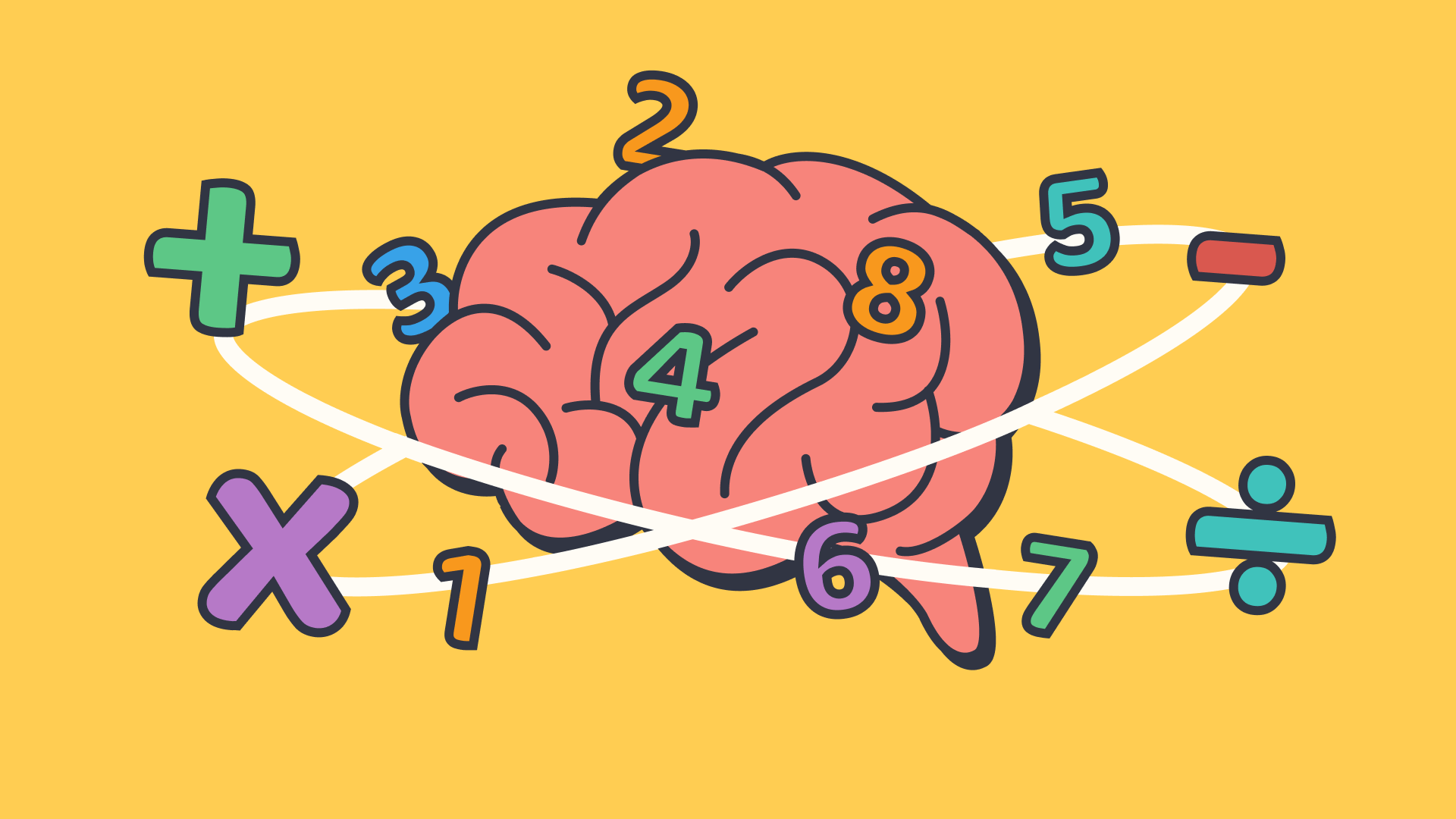Effective methods for helping students overcome maths anxiety
In this guide
Racing into your classroom you turn to your students, ready to hand out the end-of-unit assessment. Stopping to catch your breath you realise that some of the class are on their phones and those who aren’t are frantically slipping through their notes with panicked looking expressions.
Now, to be fair, this could be any classroom, but today we are focussing on one of the two most hated school subjects – maths.
Maths is one of the most anxiety-inducing subjects that students undertake. Students are often highly stressed when it comes to this branch of study; both in the classroom and in the testing environment. Quadratic equations, algebra and statistics??? It can be enough to make your head spin!
Maths anxiety is very real for many students and can be a stress inducing, lifelong debilitating condition if left unaddressed. Instead of simply carrying on, let’s see if we can make your subject more easily understood, approachable and, (heaven forbid!) even fun!
Understanding maths anxiety
It’s important to first understand the origins of a student’s maths anxiety.
1) Negative past experiences
These feelings may be deep seated and/or have been experienced for a long time before the student/s in question was a part of your class.
Maths topics can be complicated, other teachers or parents may have made negative comments or the subject matter raced through or taught in a prosaic manner. Any or all of these factors can make facing your class challenging for students, but when you combine it with anxiety, students are more and more likely to struggle with base-level concepts let alone more complex formulas. This cumulative effect can then add to student maths anxiety.
2) Learning style differences
Maths lessons unfortunately lend themselves to more outdated or “old fashioned” teaching methods. Rote learning, text books and memorisation are some of approaches that are sure to turn even the most dedicated mathematicians ‘off’ your subject. In other cases, students may simply not understand or benefit from certain teaching styles, making one way of teaching a subject an outdated and ineffective teaching methodology.
3) The fear factor
Other times students are simply scared of maths with little understanding of how or why they have come to this conclusion. Perhaps it was a failure to understand an earlier base concept and now that the class has moved ahead, they are lost. Maybe it is as simple as not receiving support at home or being fearful of asking for help in class? Or indeed it could be something as simple as school refusal or a fear of being perceived as “stupid” when others “get” the topics and they can’t.
Just as in other subject areas there are students in your class that may be several years behind and, in my maths intervention class, there were definitely cases of maths anxiety! Some had a history of failure, others had lost faith in themselves and their abilities and others even feared attempting new concepts because they assumed failure before they even began.
Maths anxiety is easy to develop, hard to diagnose and can be difficult to remove. It can take multiple interventions and continuous work to help your students grapple with and overcome their anxieties, but, with time and patience, hopefully these can help.
Create a supportive environment
This should be a no brainer but may be more challenging in a maths classroom depending upon your cohort.
Try
- Combating negative self talk as soon as it appears,
- Celebrating successes,
- Focussing on positivity and
- Creating a peer learning environment where possible.
The aim being for students to
- Be comfortable to make mistakes,
- Learn in a variety of ways (to reach as many students with different learning styles), and
- If not like maths, find maths approachable.

1) Asking questions
Many student’s maths anxiety stems from a fear of ‘looking dumb’ in front of others. Chances are, if they’re asking, there’s someone else in the class who is also wondering!
Asking for help should be a perfectly normal part of life!
Try
- An anonymous system through email or a question box at the front of the classroom,
- Explaining concepts in multiple ways to try to reach and reinforce concepts with as many students as possible,
- Ensuring that you are constantly moving around the classroom and checking in with students rather than sitting at your desk,
- Having students act as ‘teachers’ with concepts that they are familiar with for younger year levels and/or their peers. Not only will this reinforce the learning for the student in question but also for the student who is being taught!
- You can also utilise technology like Miro to allow students to share questions online anonymously in a session.
2) Dealing with negative self talk
This is a simple concept but one that can be incredibly hard to master.
That voice in your head can be loud, persistent and hard to get rid of. The aim of the game is to try and eliminate that spiral of negative self talk before it can develop further, manifesting as work or school refusal.
Begin by normalising self talk and anxiety.
I often bring up a real example of working on a maths problem and then model common ways that student’s get stuck. I then ask them to come up with a list of statements that someone who struggles with maths may say, such as, “I’m stupid” or “I’ll never understand this because I can’t do maths.” We then focussed on how to rephrase this negative self-talk, or ultimately, to silence that voice.
Often it is easier for students to give advice to others rather than themselves so, if a classroom discussion isn’t going to work for your cohort, try presenting these common misconceptions as scenarios and have students propose solutions for ‘others’.

3) Working with peers
When possible, try to utilise peer support to expand and help solidify other student’s understanding.
This might mean
- Working in pairs or groups,
- Use peers as the support network in your classroom, or
- Utilising cooperative learning practices as a part of your classroom practice.\
Remember that there are a lot of different ways of learning, let alone ability levels in your classroom. It can be extremely challenging to try and reach every single student in your class at their level but (practising that growth mindset yourself!) you might not be doing it yet!
Teaching method best practices
Now that you have established a safe classroom where students can ask questions and use peer support, you can improve your teaching by introducing some new practices to make sure students feel supported in their maths journey with you as their teacher.
1) Use real work examples
In maths, everything can feel theoretical.
- Why learn algebra?
- How does the y-intercept do anything?
- When will I ever use this in real life?
These are always common questions in my class, at the start!
It is important to ground mathematics in the real world. Whenever you can, use practical examples that link to student’s lived experiences.
The reality is, when you are out in the world, you are using maths everyday! You’re just not saying “Wow I am using a lot of maths right now.” Instead, you are answering questions like,
- How much do I need to save a month to buy this item?
- How can I best fit a specific shed into my garden? or
- What number of apples can I get if it is x price per kilo?
Particularly as students progress through the year levels maths can be made real through questions such as
- What is the difference between a fixed-term and a variable home loan?
- Which bank account works best for me? and
- How can I use my money to make money?
These are important concepts to get across to students!
We even use maths to help us solve problems that aren’t just formulas! Try grounding maths in career choices – it might be building towers, getting rockets to space, designing our favourite video game, or even the graphics in the next big action film!
2) Breakdown complexity
Firstly – what might seem simple to you might be exceedingly challenging for others. Keep in mind that students learn and absorb information at different rates and it is important to stretch and challenge maths-savvy students whilst still supporting and engaging the rest of your class at their individual levels.
Secondly – maths does, by its very nature, become more complex. Maths builds on existing concepts, there are always new formulas to be learned and, where there is a maths rule, there is often an exception to the rule!
Finally, just as in maths, if you make a mistake early in the process – it can affect your final result. Ensure that earlier thoughts or mistakes aren’t what is stopping your students.
3) Reflection and personal practice
Whilst planning and designing your lessons, ensure you have:
- Revised previous knowledge (where appropriate) to ensure clarity before building on more complex concepts,
- Encourage editing at the end of each problem to ensure mistakes are fixed rather than one error causing lasting problems in students working out,
- Embrace your mistakes so that you can learn from them in the future,
- Practise and model clear processes for students to ensure understanding and clarity,
- Allow adequate time and practise for concepts before moving on and assuming this concept is ‘done’, and overall
- Create a growth mindset space which encourages asking for help.
After your lessons reflect on
- How students responded to the content,
- How students responded to the delivery of the content,
- Whether your lesson was aimed correctly at ability levels,
- Whether students were able to be challenged at their own ability levels,
- Whether your lesson was teacher led or student led, and
- Whether the class is ready to move onto the next concept or if this is something that needs to be revisited again in a different manner.
Only in the most idealistic classrooms will you be able to achieve all of this! Try focussing on one area at a time and reflecting on the effects of this change in your classroom. Remember to take into account mitigating factors such as when your lesson is and what subject is before or after yours with regards to attentiveness and focus!

Gamify learning
Want to engage those disengaged students? Try gamifying their learning!
Introduce a competition or challenge element in your learning
This could be at an individual, a group or a class level. Find ways of rewarding for effort as well as knowledge
Try
- Maths Jeopardy,
- Using whiteboards to write their answers as both individuals and as a class,
- Online or in person maths games,
- Designing your own games,
- Round robin style classroom activities for short, meaningful activities rather than chalk-and-talk style learning and
- A class chart where certain amounts of effort, correct answers or application result in rewards.
Overcoming maths anxiety will not be an instant process and some of these anxieties may be deep seated and complex. Instead of trying to instantly “fix” this problem, begin by reflecting on your classroom practice, the needs of your students and how you can build strong resilient students before expecting changes to occur. Maths does not need to be the stigmatised subject that it often is – let’s try and break down those barriers and ensure that our future mathematicians can confidently utilise the skills that they will need in their lives in their subsequent lives.

Mark Brown
briefcase iconContent/Production Consultant
Mark spent 9 years as a middle school teacher before transitioning to the educational technology field. He was formerly the US Content Lead for ClickView, and has continued with the organization as a content and production consultant, contributing to curated topic pages, educator articles, and the production of new videos.
Other posts
Want more content like this?
Subscribe for blog updates, monthly video releases, trending topics, and exclusive content delivered straight to your inbox.











